The Business Case for World Mask Week


It’s not on many corporations’ ESG bingo cards, but “encouraging citizens to be considerate of others” certainly comes to mind when considering the news of the past few weeks. Ongoing resistance to vaccinations, the threat of the COVID Delta variant and what that all means for the fragile economic recovery — and quite frankly, our social and mental health recovery — should be top of mind for companies and everyday citizens alike. World Mask Week and more awareness surrounding this event offer organizations one way to do good for society.
Leading the charge for publicizing World Mask Week includes the Pandemic Action Network, the Africa Centers for Disease Control and Prevention (Africa CDC), the African Union, 3M and more than 50 global and regional partner organizations. The campaign seeks to unmask a universal truth: Wearing face masks in public, along with handwashing and social distancing, are still among the best ways people can protect themselves and others against COVID-19, especially at a time when many countries are in overdrive to vaccinate their citizens.
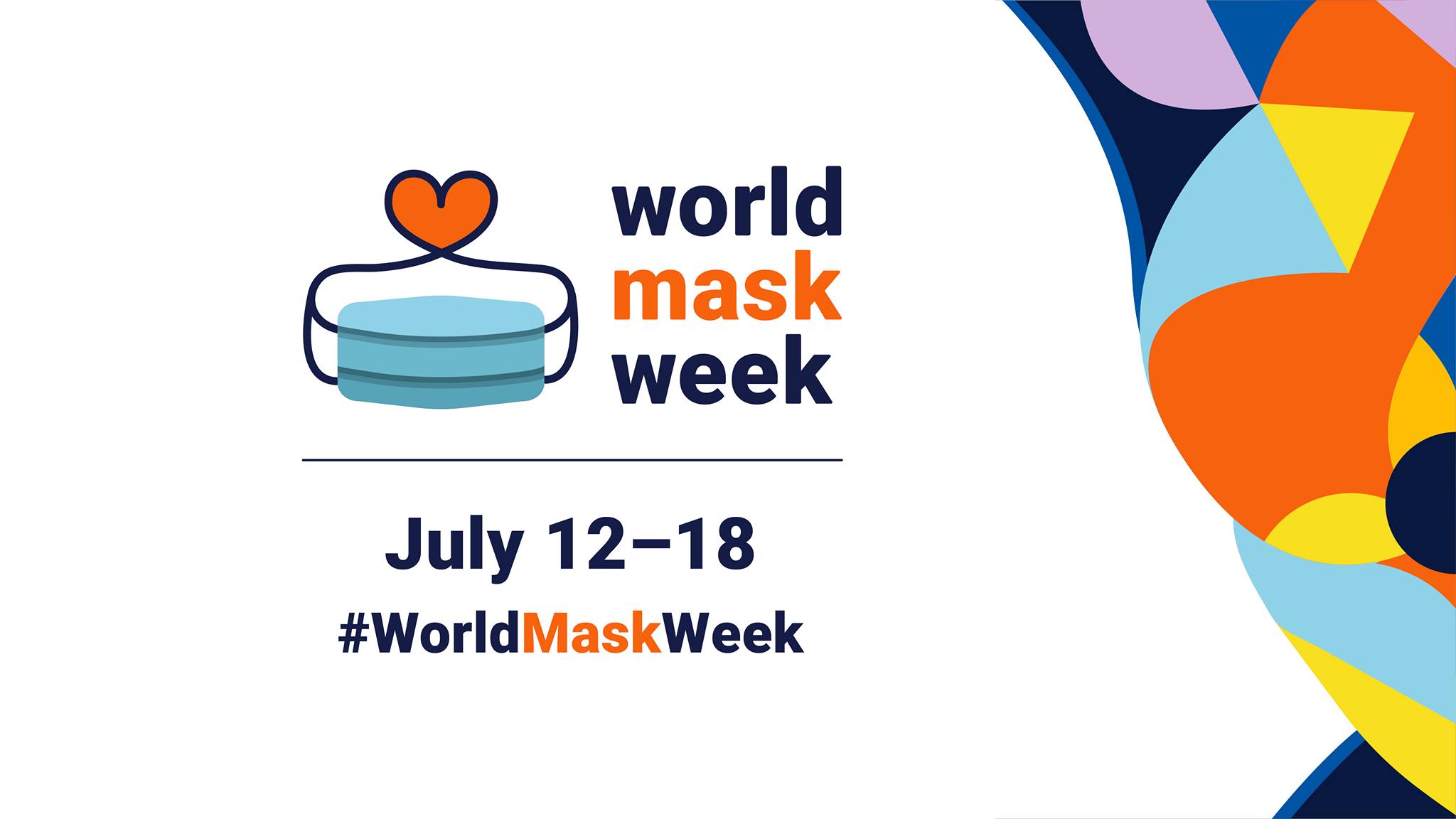
"Last year, with the first World Mask Week, we sparked a global movement in 117 countries to wear masks. This year, as the pandemic persists in much of the world, we're coming together around the message that masking still matters and to show gratitude for those who have worn a mask and continue to mask up," said Eloise Todd, co-founder of the Pandemic Action Network, in a public statement.
Editor's note: Be sure to subscribe to our Brands Taking Stands newsletter, which comes out every Wednesday.
Whenever and however the global pandemic recedes, the reality is that society needs to decide if mask wearing should continue as a means to improve public health. Plenty of evidence suggests that the wearing of masks during the pandemic made a difference when it came to stalling the spread of the common cold and flu; at least one study has concluded that the wearing of masks was also linked to a steep plunge in the rate of pediatric respiratory illnesses.
Many companies will respond that they have enough on their plate in dealing with the post-pandemic work environment, including the challenges involved in convincing employees that returning to the office is a safe decision for everyone. But as fall and winter draw closer on the calendar, it’s hard to dispute the data suggesting that wearing a mask is one of the simplest ways to prevent the spread of COVID-19 and just about any other virus-induced illness. Furthermore, as we’ve seen just about everywhere from Instagram to Red Bubble to Etsy, the mask business has unleashed its fair share of creativity and entrepreneurship in the name of helping us to make a small fashion statement, too.
World Mask Week shouldn’t just be a 2020 or 2021 thing. Wearing masks has become one of the most effective ways to stall the spread of diseases, and companies seeking to check some ESG boxes would be wise to support such a global effort.
Image credit: Pandemic Action Network/Facebook; Atoms/Unsplash
How Green Hydrogen Creates New Opportunities for the Auto Industry
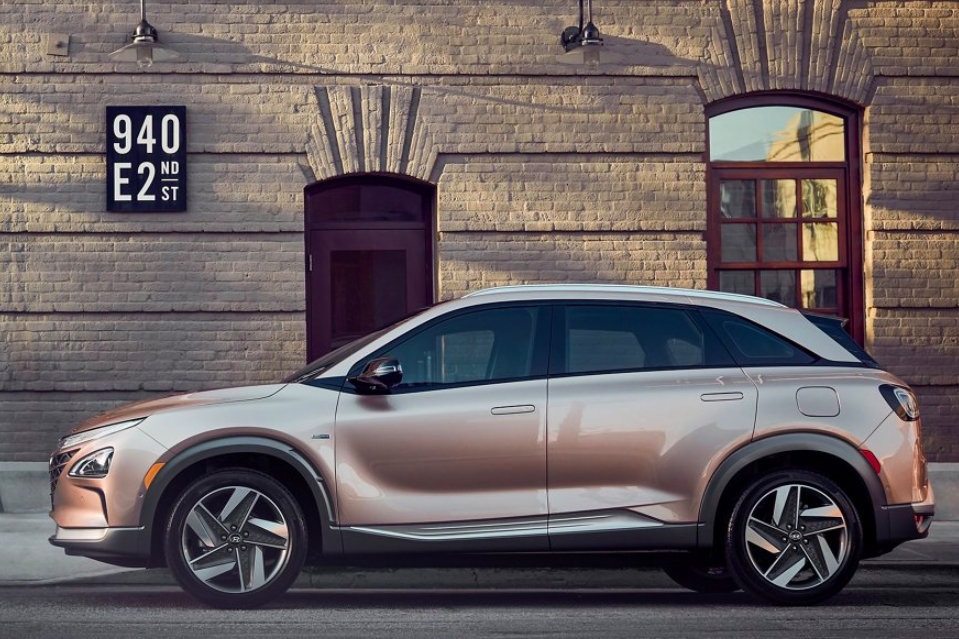
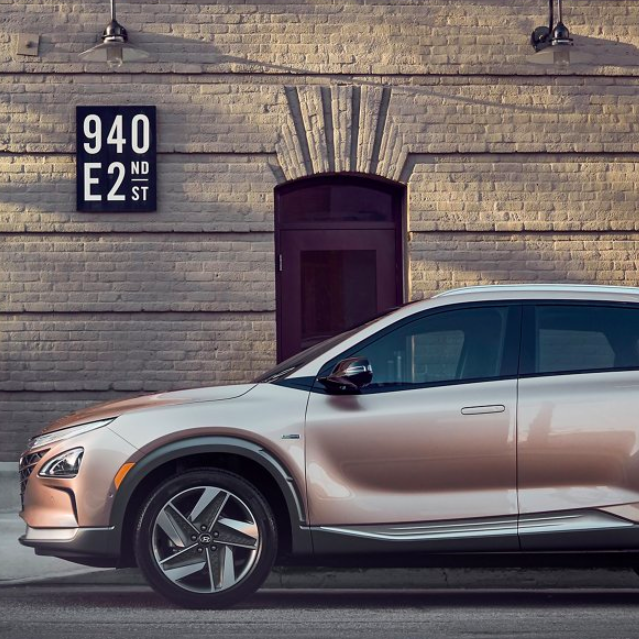
The global auto industry has had a friendly relationship with oil and gas stakeholders for more than 100 years, but things are taking a sharp turn. Electric vehicles are enabling car makers to shake off the legacy of fossil energy, and that includes producing green hydrogen for fuel call electric cars. Startups have already begun testing the green hydrogen waters, and now Hyundai Motor Group is putting its considerable influence to work within this sector.
Green hydrogen for fuel cell electric vehicles
Hydrogen fuel cell electric vehicles (FCEVs) run on electricity, like their battery-powered cousins. They also produce no tailpipe emissions, other than water. They generate electricity on-the-go, by fostering a reaction between hydrogen and ambient oxygen.
Despite the absence of tailpipe air pollution, FCEVs are not necessarily a sustainable mobility solution. That’s because almost all of the global supply of hydrogen in circulation today comes from fossil sources, primarily natural gas.
Fortunately, alternative sources have begun to emerge. Electrolysis systems, which use electricity to pry hydrogen gas loose from water, have been attracting much research and development activity to date. Add low-cost wind or solar energy to supply the electricity, and the so-named green hydrogen field has provided automakers with a unique new opportunity to collaborate on fuel production.
Unlike fossil fuels, green hydrogen can be produced practically anywhere that water and clean electricity are available. Though hydrogen fuel stations are few and far between today, the potential for rapid expansion is coming into focus. Here in the U.S., for example, the company IVYS Energy Solutions has developed a modular system called SimpleFuel, which combines green hydrogen production with a fueling station that fits into a standard parking spot.
One legacy automaker is pushing the green hydrogen envelope
Green hydrogen is still relatively expensive, mainly due to the high cost of electrolysis systems. The race is on to develop new, less costly technology, and that’s where Hyundai Motor Group comes in.
Last week, Hyundai and its Kia brand signed on to an agreement with the Canadian green hydrogen producer Next Hydrogen in an R&D project aimed at pushing down the cost of this source of fuel.
The partners will focus on an electrolysis system based on alkaline chemistry, among other options.
“The alkaline water electrolysis system is regarded as technologically one of the most rigorously tested and proven means with a long track record of research and development. Also, it has the advantage of being able to produce large-scale hydrogen and using relatively inexpensive catalysts, making facility costs low,” Hyundai explained.
Under the agreement, Hyundai and Kia will combine their experience in the fuel cell area to create a new fuel cell stack for Next Hydrogen's electrolysis system. The partners anticipate that the result will be a significant boost in performance and a consequent drop in the cost of green hydrogen.
In addition to improving performance, the partners also plan to focus on reducing costs related to construction, operation and maintenance.
The global auto industry is embracing fuel cell vehicles
The Hyundai announcement is another indication that leading global automakers are pivoting into both fuel cells and batteries in order to decarbonize the transportation sector, with the rather famous exception of Tesla Motors.
Fuel cell passenger cars have been slow to catch on in the U.S., but the market is rapidly expanding elsewhere around the world, and various automakers are persisting in their efforts to crack the U.S. market.
The Toyota Mirai was an early entrant in the field, as part of Toyota’s broader vision for a decarbonized “hydrogen society.” Honda has joined in the hydrogen fuel cell trend with its Clarity sedan. More recently, Hyundai introduced its Nexo fuel cell car (shown above) to the U.S., with an assist from the U.S. Department of Energy.
The Big Three U.S. automakers have been slow on the uptake, with the exception of General Motors. GM has been pursuing fuel cell technology for many years, partly with an eye on the military market. It has partnered with Honda on fuel cell projects and last spring the company also announced plans to test its Hydrotec fuel cell in the aviation sector.
Startups may stumble, but hydrogen could save the day
As for fuel cell vehicle startups, Tesla-style success in the U.S. has proved to be elusive so far. However, the opportunity to form partnerships in hydrogen production appears to have provided at least two fuel cell stakeholders with a lifeline.
One is the firm Plug Power, which got its start in the early 2000’s promoting fuel cell forklifts as a zero-emission solution for warehouse operations.
Investor interest appeared lukewarm at first, but in recent years Plug Power has expanded its fuel cell marketing plans to include just about anything that moves, including aircraft.
In support of that business, Plug Power jumped into the green hydrogen field last year by acquiring the firms GinerELX and United Hydrogen. Earlier this year the company also announced plans to construct the largest green hydrogen production facility in North America.
Half-steps to decarbonization can help, too
The other startup attracting media notice is Nikola. The company launched in 2016 with an ambitious plan for building a network of green hydrogen production and fuel stations, for a forthcoming long-haul fuel cell truck.
The plan attracted considerable attention from industry leaders including Ryder, UPS, Anhueser-Busch and GM, though Nikola later modified its fuel supply plan to focus more on fuel station availability, and less on green hydrogen. That made sense, considering that the supply of green hydrogen is still miniscule even today.
Late last year critics raised questions about Nikola’s business model and its stock took a nosedive. However, earlier this year Nikola took a series of steps to get back on track. Its actions so far have been consistent with the aim of producing lots of fuel cell vehicles as quickly as possible, while faced with the scant availability of green hydrogen with which to fuel them.
Earlier this year Nikola formed a fueling station partnership in Germany with the natural gas pipeline operator OGE and the fuel station firm Iveco. Though the initial focus appears to be on conventional hydrogen, OGE has begun to expand its interest in green hydrogen, and Germany is part of an aggressive EU-wide program supporting the development of green hydrogen.
Here in the U.S., last month Nikola expanded its interest in hydrogen production by investing in the firm Wabash Valley Resources LLC, which is building a hydrogen facility in Indiana.
The facility will not produce green hydrogen from water, but it is a step in the right direction because it does not involve natural gas or other virgin fossil energy inputs. It will pry hydrogen loose from solid waste, including biomass and petroleum coke, the latter being a byproduct of oil refining.
In combination with carbon capture, this type of waste-to-hydrogen solution will help wean the hydrogen fuel cell sector away from natural gas. As the global economy decarbonizes, presumably facilities of this type will rely more on biomass and other renewable wastes, and less on fossil waste from refineries.
The natural gas industry may think it holds the zero-emission hydrogen fuel cell field firmly in its friend circle, but fair-weather friends is more like it. Fossil energy is losing its grip on the fuel cell market with every new stakeholder and innovator that enters the field.
Image credit: Hyundai USA
Why Slowing Deep Sea Mining Benefits All Involved


Renewables were the sole energy source to increase in demand in 2020 and through the pandemic, the International Energy Agency (IEA) reported in May. The IEA found that wind and solar actually claimed their fastest growth rate in two decades. Electric vehicles (EVs) also saw increased demand, with most markets finding increased registration of such automobiles. This trend is great news for the green economy and the reduction of global greenhouse gas emissions, but there are always hiccups to overcome when a new industry scales. For clean energy and transportation, one challenge is the responsible sourcing metals for batteries. Hence there is growing concern over deep sea mining and its long-term impact on the globe’s environment.
Batteries that store renewable energy, including those used for EVs, require rare and expensive materials such as lithium, nickel, cobalt, copper and manganese. These materials are not as readily available as fossil fuels have been. There may be times when supply needs to catch up with demand, as the IEA projected in another May report. That survey recommended that governments stockpile the metals used in batteries so they can weather any supply disruptions.
So far, mining for these metals occurs on land, but deep ocean floors are gaining attention for their polymetallic nodules, stones about two to four inches in diameter and composed mostly of manganese and iron, but also sometimes nickel, copper and cobalt.
A push to start deep sea mining within two years
Today, deep sea mining remains in the exploratory phase. Where polymetallic nodules are concentrated in international waters, they are in the jurisdiction of the International Seabed Authority, mandated under the United Nations Convention on the Law of the Sea (UNCLOS) to regulate mining activities and give licenses to prospectors. To date, 19 companies and nations have secured such licenses.
Recognizing an economic opportunity in mining, some Pacific island nations, such as the Cook Islands, Kiribati and Nauru, have sponsored companies to explore the mineral-rich Clarion Clipperton Zone that extends west from Mexico. Nauru has sponsored Canadian mining company DeepGreen Metals Inc., expected to be trading on the Nasdaq Global Select Market later this year.
Last month, Nauru President Lionel Aingimea informed the ISA of plans to start mining within two years — a process akin to vacuuming nodules from the sea floor. The nation invoked a “two year rule” in the UNCLOS that puts a deadline on negotiations if a nation feels the process is going too slowly.
Why a moratorium on deep sea mining?
While companies are hoping to put their machinery to work, marine scientists and some companies — including Google, BMW, AB Volvo and Samsung — are arguing for a moratorium on mining until we understand more about the high seas. They contend that just because deep sea mining supports the renewable energy transition doesn’t make it sustainable. Supporting battery development doesn’t necessarily result in activity that serves as a net positive for the climate, especially if the ocean’s ability to store carbon is compromised.
We just don’t know the consequences, marine scientists say. A recent statement from marine experts, calling for a pause on deep sea mining, states in part: “There is a paucity of rigorous scientific information available concerning the biology, ecology and connectivity of deep-sea species and ecosystems, as well as the ecosystem services they provide. Without this information, the potential risks of deep-sea mining to deep-ocean biodiversity, ecosystems and functioning, as well as human well-being, cannot be fully understood.” After all, more than 80 percent of the ocean remains unexplored.
“The scraping of the sea floor and pollution from mining processes can wipe out entire species – many yet to be discovered,” adds the International Union for Conservation of Nature (IUCN).
Even so, why would companies like Google and Samsung want to put a pause on nodule mining if their products could benefit from potentially new and plentiful materials for batteries? Here's one example: BMW recently told Reuters that sourcing materials from deep sea mining is not a viable option as the automaker would not be able to assess the environmental risks.
Environmental risks in supply chains are increasingly relevant to companies hoping to maintain trust with consumers and keep a social license to operate. One study that focused on consumers in Scotland and Norway showed that the public did not have comprehensive awareness of the deep sea, but those surveyed still recognized a need for sustainable management. Even in the middle of the Pacific, mining companies are not necessarily excluded from the public’s perception and their own need for a social license. Slowing down the push to launch deep sea mining may just ensure the industry lasts in the long run – and push companies to seek new innovations in battery technology.
Image credit: Sarah Lee/Unsplash
Algal Blooms a Growing Threat to Local Economies and the Environment


Summer is a time for lemonade, fishing and taking a dip in a local lake. Unfortunately, many communities are also experiencing the effects of harmful algal blooms (also called algae blooms) in lakes, rivers and coastlines this summer. These algal blooms can form mats, films, clumps and foams and often have hues of white, green, red, yellow and brown. In addition to hindering recreational activities including swimming and fishing, these algal blooms can increase water costs, hurt local businesses, contaminate drinking water and cause harmful health effects in many areas across the globe.
What causes harmful algal blooms?
Although colonies of algae are naturally occurring, excess nutrients can cause them to grow out of control. In particular, nitrogen and phosphorus-rich runoff from commercial agriculture, wastewater and lawn fertilizers cause explosive growth.
Nutrient loads in runoff, rising temperatures and intense rainfall events that carry soil and nutrients into lakes are all contributing to harmful algal blooms. In some cases like in Utah, drought can exacerbate algal blooms when water becomes stagnant and in high-heat conditions. Likewise, diverting fresh water upstream can also exacerbate this problem.
Once optimum conditions are reached, the algae multiply, and populations frequently grow out of control. This means that some years can be worse than others, yet the harmful effects of algal blooms are steadily becoming worse across the globe over time. California, for example, reports that harmful algal blooms have increased by 464 percent in the last five years.
The exact culprit of these blooms varies a bit by the waterway. In part, it depends on the cyanobacteria at play because the exact conditions in which they thrive varies by the species. As heat waves, droughts, and extreme rainfall become increasingly common, harmful algal blooms will become more severe in many areas. Unfortunately, harmful algal species can be transported by ships in ballast water. This means that new species can be introduced, leading to new environmental problems if such algae grow unchecked into new blooms.
Why are algal blooms so concerning?
People can come in contact with algae by eating seafood, swimming, drinking water or even breathing contaminated air. Not all algal blooms are harmful, but certain species can lead to environmental and health risks. Some produce highly potent toxins, which are harmful to aquatic life and humans. Coming in direct contact with such blooms or ingesting food that contains harmful algae can lead to such extreme human health risks as liver failure, cancer and respiratory problems.
Other types of algal blooms create biomass that blocks sunlight or decreases oxygen levels in the water. Sadly, they can create dead zones or mass mortality of aquatic life. This is especially concerning in regions that are dependent on fisheries or rely on tourism. Although commercial fisheries are monitored and typically closed when unsafe conditions are reached, recreational fishing can lead to the unsafe consumption of seafood. Likewise, the closure of fisheries can have significant financial impacts on surrounding communities.
Unfortunately, toxic algae are causing beaches to close and are even contributing to water wars along the California and Oregon border. Some communities aren’t able to ensure safe drinking water supplies for their residents because they lack adequate water treatment infrastructure to respond to this threat. Unfortunately, boiling water doesn’t remove the toxins – and any necessary infrastructure improvements could cause the cost of sourcing local water supplies to increase.
Long-term economic and public health risks
In Toledo, Ohio, the cost of water is expected to double between 2019 and 2025, boosting living expenses for residents. The expenses of ensuring a safe drinking water supply are being passed on to residents through water rate hikes. Unfortunately, that burden can fall the hardest on low to moderate-income residents.
Algal blooms are also covering Lake Okeechobee, Florida’s largest freshwater lake. Its once clear waters are now opaque. This green carpet is hurting the local tourism industry and human health, but political issues are hindering any positive action and progress. There is also disagreement within the surrounding region on the best way to mitigate algal blooms without hindering commercial agriculture.
“None of this is cheap,” said conservation biologist and ecologist Hilary Swain, director of Archbold Research Station, located near Lake Okeechobee. “None of it is easy, and all of it’s going to, unfortunately, take quite a long time. But all of it is worth doing and all of it’s worth doing now because our problems are only going to get worse. We’re only digging ourselves a deeper hole down the road if we don’t address this.”
Image credit: Koushik Chowdavarapu/Unsplash
Consider This Tool to Fight Climate Change: Energy as a Service
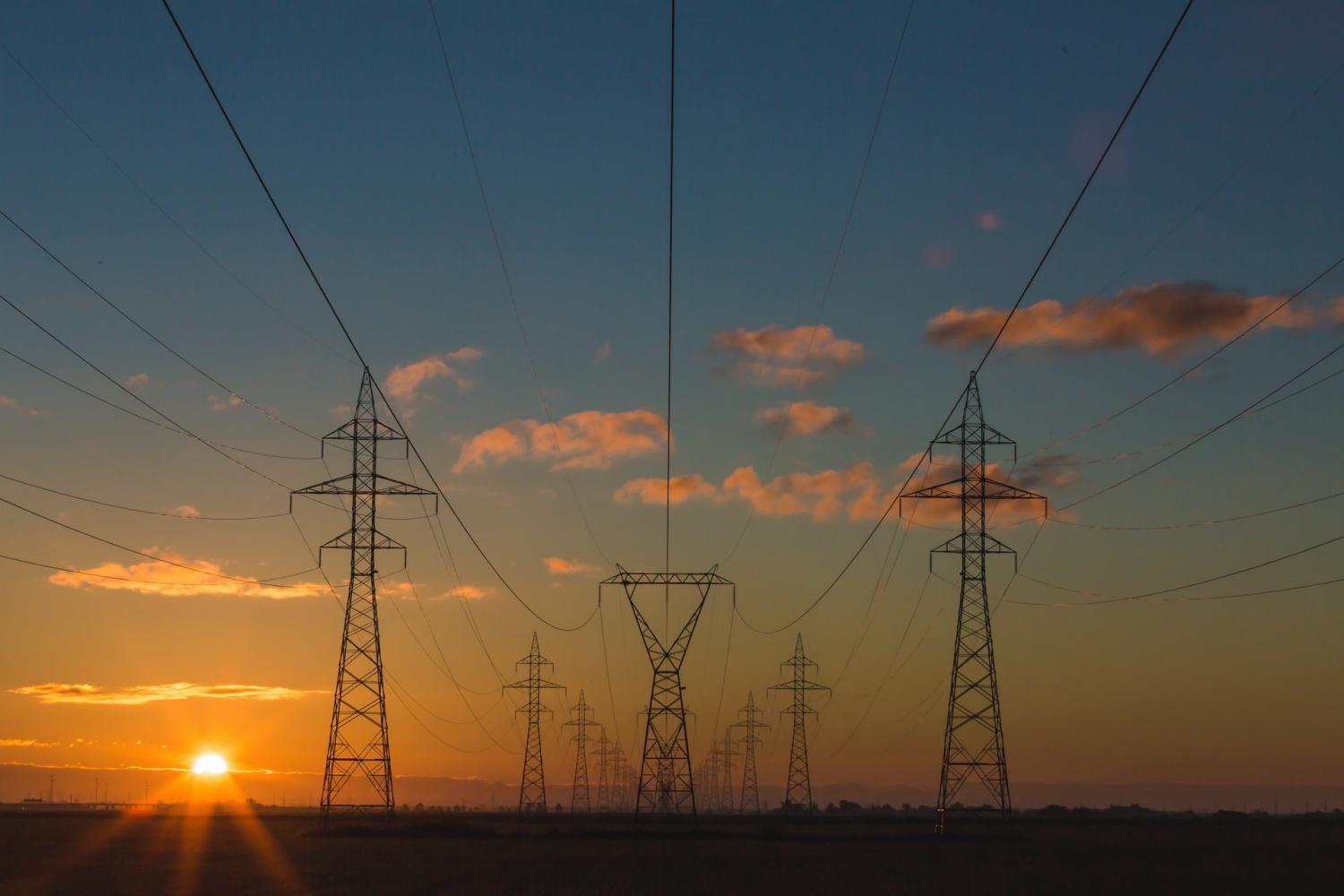
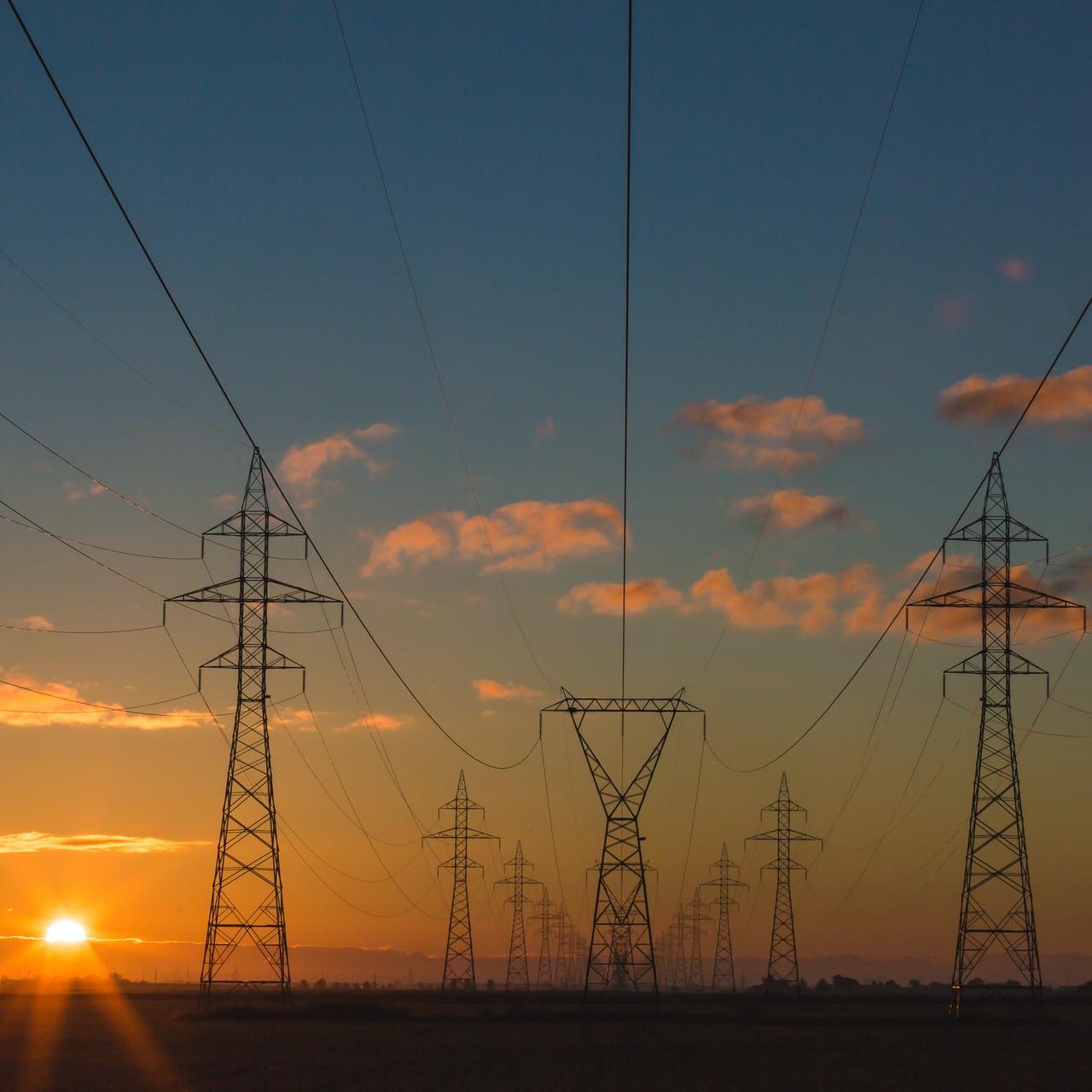
Climate change does not have a technology problem; it has a political problem. The challenge is not only in the traditional sense of politics, but also in the structural barriers that prevent the full transition to a clean energy economy. The electric utility sector is a prime example of how doing business as usual gets in the way of taking meaningful action to address climate change risks. One idea for addressing this challenge is the energy as a service (EaaS) model.
One huge problem utilities, and their customers, face today
Currently, electric utilities are designed to sell units of electricity. That reality drives business decisions based on the amount of electricity sold, regardless of other costs, such as social or environmental costs. Although some utilities factor in such costs into how they price their services, it is not the prevalent method that U.S. utilities have adopted.
In order to transition to a clean energy market, certain barriers must be overcome: in particular, high upfront technology costs. Further, capital constraints on the customer side, as well as uncertainty about the efficacy of a certain technology’s performance, can also hinder a utility’s efforts to invest in new technologies.
For electricity, energy efficiency has been a conundrum: States set energy demand reduction goals that utilities have to meet, but a reduction in demand also means a reduction in revenue under current business models. Thus, utilities are disincentivized to invest in energy efficiency technologies. In addition, upfront costs present an obstacle for both the utility and the consumer. This leads to underinvestment in energy efficiency, despite its clear financial and environmental benefits.
What is energy as a service, and how can it help take on climate change?
Because of the market opportunity created by this investment gap, a new model of service within the energy efficiency space has emerged.
Now, EaaS offers one potential solution for evolving the business model to renewable energy as well. And as companies set increasingly ambitious climate change goals, sorting out how to meet them in a cost-effective manner has become a priority.
One way to think of EaaS is the combination of technology and energy that operates as a subscription service. The customer pays for a bundle of energy technologies, rather than the amount of electricity it consumes. Further, the customer is not tied to a particular type of technology, as the the EaaS provider finances and manages the entire energy efficiency program. Therein lies the evolution of the energy service company (ESCO), which can provide demand and supply energy efficiency solutions and takes on any risk that the customer would have otherwise assumed.
How EaaS helps with both budgets and sustainability
Ameresco, a renewable energy and energy efficiency company, has been advancing EaaS as a solution for its customers’ problems. “Many of our customers come up with admirable sustainability goals on top of a laundry list of deferred maintenance needs, with more capital needs than available capital,” Lou Maltezos, Executive Vice President of Ameresco, told TriplePundit in a recent interview. “We step into the breach to tie all those pieces together.”
What that means in practice is developing an energy plan that contains costs while also meeting sustainability goals. It also delivers flexibility based on the customer’s needs. For example, Ameresco worked on a project - the U.S. Marine Corps Recruit Depot (MCRD) Parris Island - that places an extremely high value on resilience given the installation’s locations and missions.
For MCRD Parris Island, Ameresco deployed extensive energy efficiency upgrades, installed battery energy storage systems and launched microgrid technologies to enable better control over the energy system as a whole. “Parris Island was a huge project,” Maltezos told 3p. “It was extremely complex, with a mission-critical campus. We had to take a more robust approach.”
As for financing, Parris Island did not put up any money upfront as the entire project was conducted under an energy savings performance contract (ESPC), a standard model in energy efficiency projects done by ESCOs. Such an ESPC enables Ameresco to assume the risk for designing and commissioning a project, while receiving a service fee under the agreement’s terms. Ameresco will receive payments once the systems have started working. Maltezos noted that it anticipates $7 million in savings from reduced utility costs after one year of operation, giving Parris Island more bang for the buck - and with less risk.
The future of EaaS
ESPCs are a proven model for deploying energy efficiency, and increasingly, EaaS is seen by commercial and industrial customers as a solution for taking on climate change. EaaS could help customers integrate better demand-side management, deploy more renewable power technologies, and encourage electrification of facilities and buildings.
Some utilities are starting to notice the benefit of EaaS for their own operations, allowing them to redesign their traditional business models. As more utilities get involved, the range of services and service providers increases. Because of this, companies such as Ameresco view their projects as opportunities to develop long-term partnerships.
For example, a recently announced project with Northwestern University will enable the university to look at the entire campus and take on aggressive sustainability goals and address deferred maintenance needs over the course of several years. As part of the partnership, Ameresco will also offer sustainability fellowships, helping provide a roadmap for work with other higher ed institutions.
As more sectors, such as transportation and telecommunications, are digitized and modernized to fit the needs of the customer, it makes sense that the power generation sector will follow that path. Adequate policies still need to be put in place, but EaaS can provide a solution to help overcome barriers to addressing climate change risks while securing a clean energy future.
Image credit: Matthew Henry/Unsplash
Masdar Expands Global Renewables Footprint with a Solar Project in Armenia


When international organizations and nonprofits launch projects worldwide, usually they are in regions such as India, Africa and some parts of Latin America. The reasons are all over the map: an opportunity to show some “doing good,” a recognition that renewables can work as a leapfrog technology when there is no reliable grid in the first place – and quite frankly, sometimes the driver is white savior complex.
Meanwhile, other areas that could use such investment, such as parts of rural Latin America, the Balkans and the Caucuses, are often overlooked.
One organization that has gone against the grain when it comes to investing in renewables is Masdar. Abu Dhabi’s renewable power and sustainable urban development initiative has long invested in such regions as the United Kingdom and western Africa. But the company’s clean power projects have also landed in places as diverse as the Seychelles, Jordan, Egypt, Afghanistan and the South Pacific.
Now, add the tiny country of Armenia, a little larger than Massachusetts but smaller than Maryland, to that list. The landlocked nation of 3 million people, long roiled by conflict with its neighbor, Azerbaijan, along with corruption within its government (though in fairness that has improved in recent years) has selected Masdar to take the lead on a 200-megawatt solar plant located a hour’s drive west of Yerevan (pictured above), the country’s capital and major population center.
According to an emailed news release from Masdar, the total amount invested in this solar installation will reach $174 million. The 500-hectare complex will be the largest clean power investment in Armenia’s history, according to Armenian National Interest Fund (ANIF), which will have a 15 percent ownership in this venture. Long-term plans also call for Masdar to deploy another 200 megawatts of solar power in the country.
Data from IRENA (International Renewable Energy Agency) suggests Armenia’s solar power capacity is largely untapped. That’s not surprising, as much of the country is bathed in sun, which helps to explain the country’s rich legacy of agricultural products. But only about 15 percent of Armenia's land is arable. On that point, the communities of Talin and Dashtadem, where this first Masdar-led solar installation is slated for development, scores plenty of sun but the surrounding land is not a prime candidate for farming.
Like many countries with a sizable global diaspora, Armenia’s economy had long depended on remittances, though the country’s surging GDP pre-pandemic saw that share fall from 20 percent in 2013 to 11 percent in 2019. That largess coming from Armenians living and working abroad has also been met by investments and philanthropic projects in the country within a wide range of industries including renewables. The diaspora’s focus on the motherland, especially in communities with a large Armenian population such as Boston and Fresno, have helped launch new investments since the country scored independence from the former Soviet Union in 1991. Over the years, in fact, Armenia frequently ranked as one of the fastest growing economies on the planet.
On the renewables front, Masdar can help scale up renewables in Armenia – and assist the country in weaning itself away from its primary sources of power, natural gas and nuclear. Currently, 11 percent of the country’s energy supply comes from renewables – and currently that slice of the pie is almost equally divided between biofuels and hydropower.
Image credit: Levon Vardanyan/Unsplash
Train Travel Scores a Reboot on Both Sides of the Pond


On both sides of the Atlantic, antsy travelers in this post-pandemic era are booking flights as airlines are reporting a surge in traffic. But the sudden increase of air travelers has come with countless hiccups as a convergence of disengaged employees, bad weather and technological snafus have caused more flights to end up either delayed or canceled. Could train travel become an option?
As anyone who’s done a gap year abroad or a summer in Europe can verify, train travel on the continent is often a singular experience, as countries from Spain to Sweden can brag about high-speed rail systems that would leave any U.S. passenger train far behind in the dust. But that rite of passage, the overnight train journey, had fallen out of favor in Europe as discount airlines offered cheap tickets with the promise to get passengers to their destinations quickly.
For many reasons, however, including frustrations with flight delays, Greta Thunberg’s clarion call for “flight shaming” and consumers’ growing awareness of their carbon footprint have together started to make train travel en vogue once again.
Meanwhile, several time zones to the west, Amtrak is experiencing a bump upward in passengers as the threat of the global pandemic wanes. And America’s train system sees that trend continuing to a point at which the company announced a new fleet that will include up to 83 new trains, which will run up and down Amtrak’s bustling northeastern corridor.
The $7.3 billion investment, for which Amtrak contracted with Siemens Mobility Inc., will result in a new rail experience as trains that have been running for as long as 40 years will be replaced with a more modern version. Assuming all goes to plan, these train cars, will score more comfortable seating, individual power outlets and USB ports, onboard Wi-Fi, improved lighting along with panoramic windows, larger vestibules and revamped in-dining options. On the environmental side, some of the trains running on New York state’s Empire Service will reportedly include a hybrid battery engine, which promises fewer emissions.
While that’s certainly an upgrade for train enthusiasts here in the U.S., the reality of a country in which 48 of its states are spread across four time zones means overnight train travel for many travelers is still too far of a stretch.
But what if Amtrak could promise a more comfortable experience?

A young company in Europe might offer some ideas.
France-based startup Midnight Trains is promising a far more comfortable service than the seat-turned-into-a-bed experience that’s the prevalent choice for most passengers choosing train travel across Europe. The company’s goal is to launch its first line by 2024, with services branching out as far west as Porto, Rome to the south, Berlin and Copenhagen to the northeast and Edinburgh to the north.
“The experience imposed by commercial airlines is full of stress and discomfort,” says the company on its website. “The speed they sell is an illusion and a 1-hour flight is actually 4 hours long from door to door.”
Therein lies the company’s key selling point – along with the fact train travel has much less of an impact on the environment compared to travel by plane.
What Midnight Trains is also promising is more than a place to crash on the rails while reaching the next destination. For travelers, the journeys on these trips will feel like a stay within a hotel, with access to a restaurant and even a bar, with additional services accessible through a smartphone app.
Amtrak does have sleeper cars on its long-haul routes, but reviews are all over the map. The Points Guy mentioned several pros but also expressed disappointment with the food and service. One reviewer on Trip Advisor was overall effusive about the experience, but added “If you don't sleep well bouncing a little, might not be for you.”
Could a “rolling boutique hotel” experience work here in the U.S.? Amtrak does not have to necessarily mimic the plan Midnight Trains has in store for its upcoming service. But between younger generations wanting to try the latest, great trend and older generations seeking to relive their twenty-something experience enjoying train travel across Europe but with a 2020s twist, Amtrak has an opportunity to boost ridership while capitalizing on travelers’ growing disenchantment with the hassles of flying.
Image credits: Andreas Stutz/Unsplash; Midnight Trains/Facebook
Add Stellantis to the List of Automakers Going All-In on EVs


Stellantis, the house of automotive brands born earlier this year after a merger between Fiat Chrysler Automobiles and PSA Group (the former Peugeot S.A.), has announced a massive drive toward electrification across its entire portfolio. The target of $35.5 billion for spend over the next several years seeks bold results in new electric vehicle (EV) models, new software development and a transformation in battery technology.
Included in those plans over the next half-decade are bets on dual battery chemistries, as in a high energy-density option as well as one based on nickel cobalt-free technology. The company said it would also roll out solid-state battery technologies starting in 2026. The focus on solid-state batteries will surely raise some eyebrows, as it is a technology generally seen as superior to the conventional lithium-ion batteries currently powering today’s EVs, but one that is also significantly more expensive.
Notwithstanding any debate over which battery technology will surge ahead in the next several years, this decision by Amsterdam-based Stellantis certainly looms as a disruption for many of its brands. Besides the familiar (depending on which side of the pond you are) automotive brands such as Chrysler, Citroën, Dodge, Fiat, Jeep, Peugeot and Ram, Stellantis’ portfolio also boasts the likes of Alfa Romeo (of which a recent Giulia Quadrifoglio is shown above), Lancia and Maserati.
From the point of view of Stellantis, this shift toward EVs is not only about guessing consumer preferences or doing its part to push forward on climate action. The chips that Stellantis is putting on the table are about long-term profitability. The company’s quest for achieving double-digit adjusted operating income margins by mid-decade dovetails with a strategy based on increased electrification, the streamlining of its operations and distribution costs - and a drop in the price of battery technologies would also help the company reap higher margins.
Investors so far don't appear moved by this shift in strategy; shares of the company were priced at just under $19 yesterday after closing at $19.60 on Wednesday. But the race toward electrification will be a marathon or two, not a sprint.
While the company is bullish on new battery technologies, lithium-ion batteries are still part of the company’s plans for the long run; Stellantis said it has signed two memoranda of understanding (MOUs) with two lithium geothermal brine processors in North America and Europe.
Fans of the various brands managed by Stellantis will have to wait to see which models will emerge with an all-electric train, though the rebranding effort is already underway. Dodge’s new mantra, for example, will be “Tear Up the Streets… Not the Planet.” As for Maserati: “The Best in Performance Luxury, Electrified.”
According to CNBC, the upcoming changes at Stellantis will result in 55 newly electrified vehicles by 2025 across the U.S. and Europe, with 40 of them EVs and the other 15 plug-in hybrids. Dodge could see a “muscle car” rivaling the Charger by 2024; Ram will introduce an all-electric pickup that same year; Jeep is targeted to have a range of all-electric SUVs by the end of 2025.
Plans at Stellantis diverge somewhat from its main global competitors. Eschewing plug-in hybrids, GM has said it will eventually offer only all-electric vehicles. Ford is embarking on a similar path, symbolized by its all-electric Mustang Mach-E. Honda has said it would phase out all gasoline-powered vehicles by 2040. And Volkswagen has pledged that its cars in Europe will be all EVs by 2035, with a similar strategy for the U.S. market in the longer term.
Image credit: Łukasz Nieścioruk/Unsplash
Another Solution for The Ocean Plastic Problem: Cell-Free Biomanufacturing


Public awareness is finally awakening to the ocean plastic pollution crisis, and consumers are also becoming more aware of their power to push for solutions. That can motivate investors to apply their resources to new, more sustainable fields. One of those fields is cell-free biomanufacturing, and it could lead to new fabrics that help reduce plastic microparticles in the ocean and elsewhere.
Laundry and the ocean plastic microparticle problem
Waste-strewn beaches and sea creatures entangled in plastic debris are the most visible forms of ocean plastic pollution, but waste mismanagement is only part of the crisis. The other part consists of microscopic particles of plastic that collect in ocean habitats and concentrate in food chains.
Some types of ocean microplastic form when larger plastic items disintegrate in water. At least in theory, that problem could be resolved by improving and enforcing waste management and recycling systems.
Cutting down on plastic packaging, reducing the amount of single-use plastics in circulation, and introducing more biodegradable materials into the market can also help resolve the waste management part of the microplastic problem.
Unfortunately, solutions to the other part of the ocean microplastic problem are much thornier. Millions of people all over the world make a significant contribution to the microparticle problem, simply by doing their weekly laundry. Microparticles of synthetic fiber get knocked loose during the wash cycle. They flow down the drain with rinse water, and then become part of this ongoing ocean plastic problem.
Wastewater treatment plants can collect some of the fibers, but many are too small to be caught. They enter drains that lead to the oceans, either directly or through rivers, and they become part of the global ocean plastic crisis.
How big is the fabric microparticle problem?
The connection between the washing of synthetic clothing and the pollution of the marine environment has been confirmed by researchers since at least 2011, when the American Chemical Society published a widely cited study of microplastic accumulation on shorelines. More recently, the journal Nature published a study that exposed the role of everyday habits in the problem, by measuring the amount of microfibers released by ordinary household washing machines.
“Results showed that microfibers released during washing range from 124 to 308 [milligrams per kilogram] of washed fabric depending from the type of washed garment that corresponds to a number of microfibers ranging from 640,000 to 1,500,000,” the study’s authors reported. They also noted that many of the released microfibers were small enough to escape from wastewater treatment plants.
The washing machine study also took note of extensive literature on the subject.
“A recent review related to microfibers detection in real samples highlighted how microfibers can be found in beaches worldwide, in the water of the Pacific Ocean, the North Sea, the Atlantic Ocean and even in the Artic and in deep sea sediments,” the authors observed. “Textile fibers were also found in fish and shellfish on sale for human consumption, sampled from markets in Makassar, Indonesia, and from California, USA.”
No easy solution to the laundry problem
The laundry problem may seem intractable, but solutions are on the horizon.
Upgrading municipal wastewater treatment systems is one effective way to reduce microfiber pollution. However, such work is time consuming and expensive. Though it can make a significant difference for older treatment plants that are overdue for an upgrade, it may not completely eliminate microfiber discharges.
Another avenue is the emergence of “waterless” laundry machines that deploy polymer beads to remove dirt and stains. The technology only requires a cup-sized amount of water and a small amount of detergent. Because so little water is involved, the technology makes it possible to capture microparticles at the source, before they wash down the drain. Those same particles could then be caught in a microfilter and disposed with the regular household solid waste.
The startup Xeros has been working on waterless laundry technology for several years, and the company recently introduced a microfiber trap for commercial laundries. Unfortunately, a similar solution for household laundry machines may be years away.
Another pathway would be to reduce the use of petrochemical fibers in clothing and household goods, and to rely more on natural fibers that can biodegrade safely. That solution is already at hand, but a rapid transition to all-natural fibers will raise new conflicts in the already stressed area of land, water, and energy in agriculture.
The high tech, cell-free biomanufacturing solution
Encouraging or requiring the reuse and recycling of natural fabrics would help alleviate some of the stress on agriculture. An additional pathway would be to use new cell-free biomanufacturing methods to “grow” bio-based building blocks for synthetic fibers that can degrade harmlessly in water.
Cell-free systems are not a new phenomenon. They emerged in the 1950s as a powerful research tool for conducting precise, efficient investigations without the distraction of cultivating entire cells.
A decade later, cell-free systems enabled researchers to decipher the genetic code in the 1960s. They are still best known for their application in medical and biological fields, and they have also been applied to energy and agriculture.
As applied to fabrics, such cell-free systems could provide a more sustainable way to replace synthetic fibers with bio-based ones. The challenge is to scale up and reduce costs.
One company that seems to have figured it out is the startup FabricNano.
“We have created a novel DNA-based flow reactor to produce biochemicals by engineering enzymes with the ability to bind directly to DNA,” the company explains. “The use of DNA as a scaffold allows high spatial precision, while the ability of enzymes to attach anywhere along a string of DNA provides deep flexibility.”
Fortune recently profiled the company and described its biomanufacturing process as harnessing “the chemical laboratories that exist inside the cells of living organisms, but it does so without the need to actually use living things.”
The process still requires energy input in the form of natural sugars. However, since there is no need to tailor the input for living cells, FabricNano can deploy impure waste sugars. That provides the company with an additional layer of sustainability.
The Fortune profile specifically mentions waste glycerin from biodiesel production. Although pure glycerin has many commercial uses, biodiesel waste glycerin is impure and unsuitable for most applications. As a result, there has been an ongoing glut of waste glycerin in the global supply chain. The oversupply is all but certain to persist as demand for biodiesel rises.
Waste glycerin provides FabricNano with a practically limitless supply of inexpensive feedstock and a firm foothold in the circular economy, too.
As Fortune notes, FabricNano has some powerful backers supporting it financially, including actress and gender equality activist Emma Watson as well as Twitter co-founder Biz Stone and former Bayer CEO Alexander Moscho.
FabricNano is also a welcome addition to the growing field of nanomaterial manufacturing. In recent years, there has been considerable activity in the areas of specialized fabric coatings and other applications, some of which may involve toxic materials. By relying on a bio-based, biodegradable platform, FabricNano could help steer the entire field in a more sustainable direction – and help tackle the mounting ocean plastic crisis.
Image credit: Cristian Palmer/Unsplash
This Social Network Is Launching a Microfund for Women Entrepreneurs


While the U.S. has about 12.3 million female-owned businesses that generate approximately $1.8 trillion in revenue annually, when it comes to business proposals getting seed money, the major share of the funds still go to men. Meanwhile, women entrepreneurs often find themselves left in the cold and find themselves having to look for alternative sources of funding.
To help bridge that divide, as well as assist other groups of all ages, life stages, ethnicities and backgrounds, according to Peanut, it created StartHER, a microfund to help startups. Peanut, which also operates a social networking app for women, is targeting entrepreneurs who lack family and friends who can pull out their checkbooks.
“The assumption that founders should have networks able to invest in their businesses creates an unfair starting line for most groups. If we don’t remove barriers to that initial funding by providing access to capital, how can we ever hope to see a changing founder profile further through the fundraising funnel?” said Peanut CEO and investment committee member Michelle Kennedy, in a prepared statement. “Peanut’s StartHER fund opens the door to founders looking for that early funding.”
StartHER is launching with $300,000 and expects to award between three and four investments this year. Peanut will not have any equity in the businesses in which it invests, according to the company. Among the goals of StartHER is to find “pre-seed” businesses striving for a positive impacts on society, healthcare or the environment. Individual grants will range between $25,000 and $50,000.
“As a member of the Female Founders Fund, I’m excited to be a part of StartHER’s investment committee to help these entrepreneurs, who have not been adequately recognized, grow their networks in the venture capital community,” noted Anu Duggal, founding partner of the fund, in a statement.
Currently, women entrepreneurs receive only about 7 percent of venture capital funding for business ideas, despite the fact that as a whole, women entrepreneurs are more successful than men, as discussed in the book Female Entrepreneurs: the Secrets of Their Success. Approximately 17 percent of venture capital funding went to companies with at least one founder who is female, according to Crunchbase. When it comes to all-women businesses, though, only 2 percent were awarded funding. For women of color, the statistics are even worse.
The COVID-19 pandemic also hit women entrepreneurs on multiple fronts. According to Crunchbase data, between 2019 and 2020, there was a 27 percent decrease worldwide in funding for businesses started by women. When schools and childcare centers closed and education went virtual starting in 2019, many women had to put business plans - and their businesses - on hold to take care of their families. The elimination of in-person networking opportunities also put women at a disadvantage.
The reasons women entrepreneurs are awarded smaller investment loans and grants than men vary; often they ask for less money, because they are more cautious when it comes to estimating the value of their businesses. In some cases, women’s proposals for companies are less conventional, making traditional investors wary. “Women entrepreneurs often don’t reflect the image financial backers have for this group of business leaders,” according to the aforementioned book. “...They (women) just don’t conform to the norm of the young hoodied-male geek.”
Not to mention that most of those in charge of the dollars at venture capital firms are male; only 13 percent of decision-makers are women. Some women also reported experiencing sexism during the application process or said interviewers focused more on their personal lives than work plans.
But with the post-COVID economy, more women are poised to launch new businesses. Companies owned by women are poised to stimulate the economy and can – if only investors would take this reality into consideration.
The StartHER fund is currently accepting applications; the committee is scheduled to meet every six months to review proposals. Besides seed money, fund recipients also will receive support from committee members and their networks.
Criteria for StartHER applications also will evolve. “Moving forward, we’ll be considering other factors such as deal flow to help inform how we invest and the companies we choose to invest in,” Kennedy explained. “We’re heavily focused on making the right investments that will have the most impact versus simply making returns.”
Image credit: Mateus Campos Felipe/Unsplash